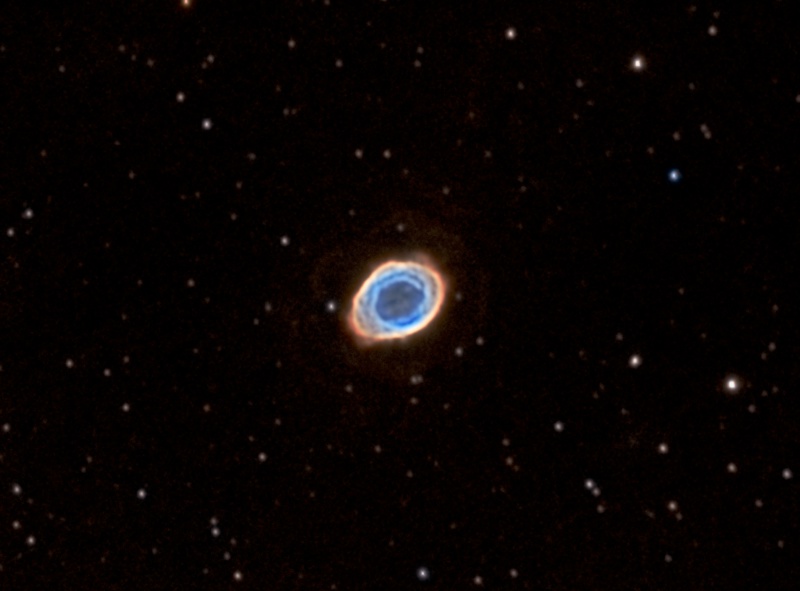The famous Ring Nebula M57 in Lyra is often regarded as the prototype of planetary nebulas. Recent research has confirmed that it is, most probably, actually a ring (torus) of bright light-emitting material surrounding its central star, and not a spherical (or ellipsoidal) shell. Deep observations also show an extended halo of material extending off to over 3.5 arc minutes, remainders of the star's earlier stellar winds.
The central star is a planet-sized white dwarf star, which shines at about 15th magnitude. It is the remainder of a sunlike star which has blown away its outer envelopes at the end of its evolution. Now over 100.000 K hot, it will soon start to cool down, shine as a white dwarf star for a while of several billions of years, and then eventually end as a cold Black Dwarf.
As for most planetary nebulae, the distance to the Ring Nebula M57 is not very well known, estimates range from 1.000 to 4.100 light years. It has an apparent diameter of 1 arc minute and its real diameter is about one light year. At magnitude 9.0 its high surface brightness makes it an easy object, even from the city and even with small telescopes.
La famosa Nebulosa del Anillo M57 en la constelación de Lira es a menudo reconocida como el prototipo de nebulosa planetaria. Descubrimientos recientes han confirmado que con mucha probabilidad se trate de un anillo (toro) de material luminiscente rodeando una estrella central, y no una esfera (o elipsoide). Las imagenes profundas también muestran un halo extenso de material de hasta 3.5 minutos de arco, restos de los primeros vientos estelares. En esta imagen se muestra muy tenue entre el ruido de fondo.
La estrella central es una enana blanca del tamaño de un planeta, que brilla con magnitud 15. Es el remanente de una estrella parecida a nuestro Sol que se ha desprendido de sus capas exteriores al final de su evolución. Ahora se encuentra a unos 100.000ºK, y comenzará pronto a enfriarse, brillando como una enana blanca durante unos miles de millones de años y entonces eventualmente se convertirá en una enana oscura.
Como la mayoría de las nebulosas planetarias, la distancia a la Nebulosa del Anillo no se conoce muy bien, estimándose en un rango de 1.000 a 4.100 años luz. Tiene un diámetro aparente de 1 minuto de arco y su diámetro real es de aproximadamente un año luz. Con una magnitud de 9, su elevado brillo superficial lo convierte en un objeto fácil de observar, incluso desde la ciudad con pequeños telescopios. |

